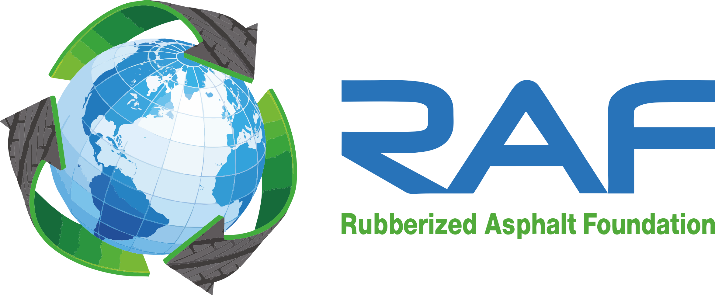The Federal Highway Administration’s Expert Task Group originally was started in the 1990s to help implement Superpave Technology, but has continued in a role to: (1) review research results, (2) address technology gaps, and (3) provide guidance for users of Superpave and asphalt mixture and construction technology. Recently, the ETG met on September 24-27, 2013, in Fall River, Massachusetts at the UMASS Advanced Technology and Manufacturing Center.
Although the agenda was full of very interesting items, topics and subjects, this report will focus on the few items that pertain to rubberized asphalt. RAF Chairman George Way; advisors John D’Angelo, Walaa Mogawer, Gaylon Baumgardner, Louay Mohammad and Geoffrey Rowe; and Director Doug Carlson participated in the meetings.
RAF’s D’Angelo provided a discussion on the use of the MSCR data to help characterize the modifier structure in a binder. Recycled tire rubber is different. Although it can create elasticity and toughness to a binder to reduce cracking, it does not form a modifier network. It is more of an elastomeric filler. MSCR percent recovery is different for PMB and RTR. He is working on measurement systems that may better capture the properties of RTR binders.
One area of study is a different configuration for the dynamic shear rheometer (DSR). The current DSR configuration for PG testing uses a small sample of liquid asphalt about the size of a dime. Two round plates are spaced 1 mm apart with the liquid asphalt specimen tested in between the plates. An alternative configuration using a “cup and bob” is being examined to determine accuracy and repeatability.
The cup and bob configuration will provide more room in the asphalt sample to accommodate larger rubber particles, such as those used in asphalt-rubber systems that may be as large as 1.8 mm in size. Due to the large particles and small gap tolerances in the plate configuration, the heavily modified AR binders cannot be accurately performance graded. Comparative testing with mixes or actual field data is used to quantify material properties in terms of a performance grade.
Superpave Mix Tests
With the increasing use of RAP and RAS in asphalt mixtures to reduce cost, some experimentation has be conducted to see if the addition of warm mix technology or rubber can help further increase the maximum limits on RAP and RAS.
Rubber is known to provide fracture resistance in mixtures and RAP and RAS mixes tend to be brittle and easy to crack.
RAF’s Mogawer provided some laboratory testing results on asphalt rubber gap graded mixtures as a control with the addition of RAP and a warm mix technology.
The objectives of the study were to design an asphalt rubber gap-graded (ARGG) mixture incorporating 0% (control), 25% and 40% RAP content with and without WMA; determine the effects of using up to 40% RAP and/or WMA technology on the performance of asphalt rubber surface mixtures; and evaluate the effect of high RAP contents and WMA technology on the stiffness, performance, and workability of ARGG mixtures:
- 1. Mixture Stiffness – Dynamic Modulus |E*| in AMPT
- 2. Fatigue Characteristics – Beam Fatigue, Uniaxial Tension-Compression Test & Semi-Circular Bending Test
- 3. Reflective Cracking – Texas Overlay Tester
- 4. Rutting & Moisture Susceptibility – Hamburg Wheel Tracking Device
- 5. Mixture Workability – Principal of Torque
It was determined that the stiffness increase in the mixtures containing RAP was mitigated through the use of a WMA technology and corresponding reduced aging temperatures and that warm mix provided greater “workability” of RAP mixes. However, the warm mix additive did not appear to improve the fatigue or crack resistance of the AR mixes with RAP in unconfined tests. The AR mixes with RAP and warm mix did pass the moisture susceptibility testing in the Hamburg wheel tracking device.
Click the links below to review presentations from the meeting:
